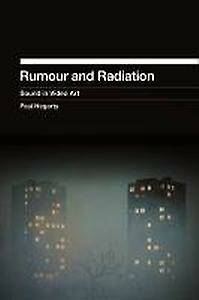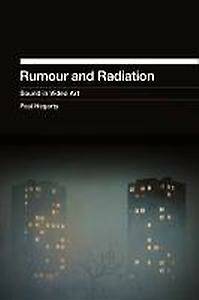
Bedankt voor het vertrouwen het afgelopen jaar! Om jou te bedanken bieden we GRATIS verzending (in België) aan op alles gedurende de hele maand januari.
- Afhalen na 1 uur in een winkel met voorraad
- In januari gratis thuislevering in België
- Ruim aanbod met 7 miljoen producten
Bedankt voor het vertrouwen het afgelopen jaar! Om jou te bedanken bieden we GRATIS verzending (in België) aan op alles gedurende de hele maand januari.
- Afhalen na 1 uur in een winkel met voorraad
- In januari gratis thuislevering in België
- Ruim aanbod met 7 miljoen producten
Zoeken
€ 67,95
+ 135 punten
Uitvoering
Omschrijving
This is a book about video art, and about sound art.
The thesis is that sound first entered the gallery via the video art of the 1960s and in so doing, created an unexpected noise. The early part of the book looks at this formative period and the key figures within it - then jumps to the mid-1990s, when video art has become such a major part of contemporary art production, it no longer seems an autonomous form.
Paul Hegarty considers the work of a range of artists (including Steve McQueen, Christian Marclay, Ryan Trecartin, and Jane and Louise Wilson), proposing different theories according to the particular strategy of the artist under discussion. Connecting them all are the twinned ideas of intermedia and synaesthesia. Hegarty offers close readings of video works, as influenced by their sound, while also considering the institutional and material contexts. Applying contemporary sound theory to the world of video art, Paul Hegarty offers an entirely fresh perspective on the interactions between sound, sound art, and the visual.
The thesis is that sound first entered the gallery via the video art of the 1960s and in so doing, created an unexpected noise. The early part of the book looks at this formative period and the key figures within it - then jumps to the mid-1990s, when video art has become such a major part of contemporary art production, it no longer seems an autonomous form.
Paul Hegarty considers the work of a range of artists (including Steve McQueen, Christian Marclay, Ryan Trecartin, and Jane and Louise Wilson), proposing different theories according to the particular strategy of the artist under discussion. Connecting them all are the twinned ideas of intermedia and synaesthesia. Hegarty offers close readings of video works, as influenced by their sound, while also considering the institutional and material contexts. Applying contemporary sound theory to the world of video art, Paul Hegarty offers an entirely fresh perspective on the interactions between sound, sound art, and the visual.
Specificaties
Betrokkenen
- Auteur(s):
- Uitgeverij:
Inhoud
- Aantal bladzijden:
- 216
- Taal:
- Engels
Eigenschappen
- Productcode (EAN):
- 9781623562694
- Verschijningsdatum:
- 1/12/2014
- Uitvoering:
- Paperback
- Formaat:
- Trade paperback (VS)
- Afmetingen:
- 152 mm x 226 mm
- Gewicht:
- 340 g

Alleen bij Standaard Boekhandel
+ 135 punten op je klantenkaart van Standaard Boekhandel
Beoordelingen
We publiceren alleen reviews die voldoen aan de voorwaarden voor reviews. Bekijk onze voorwaarden voor reviews.









